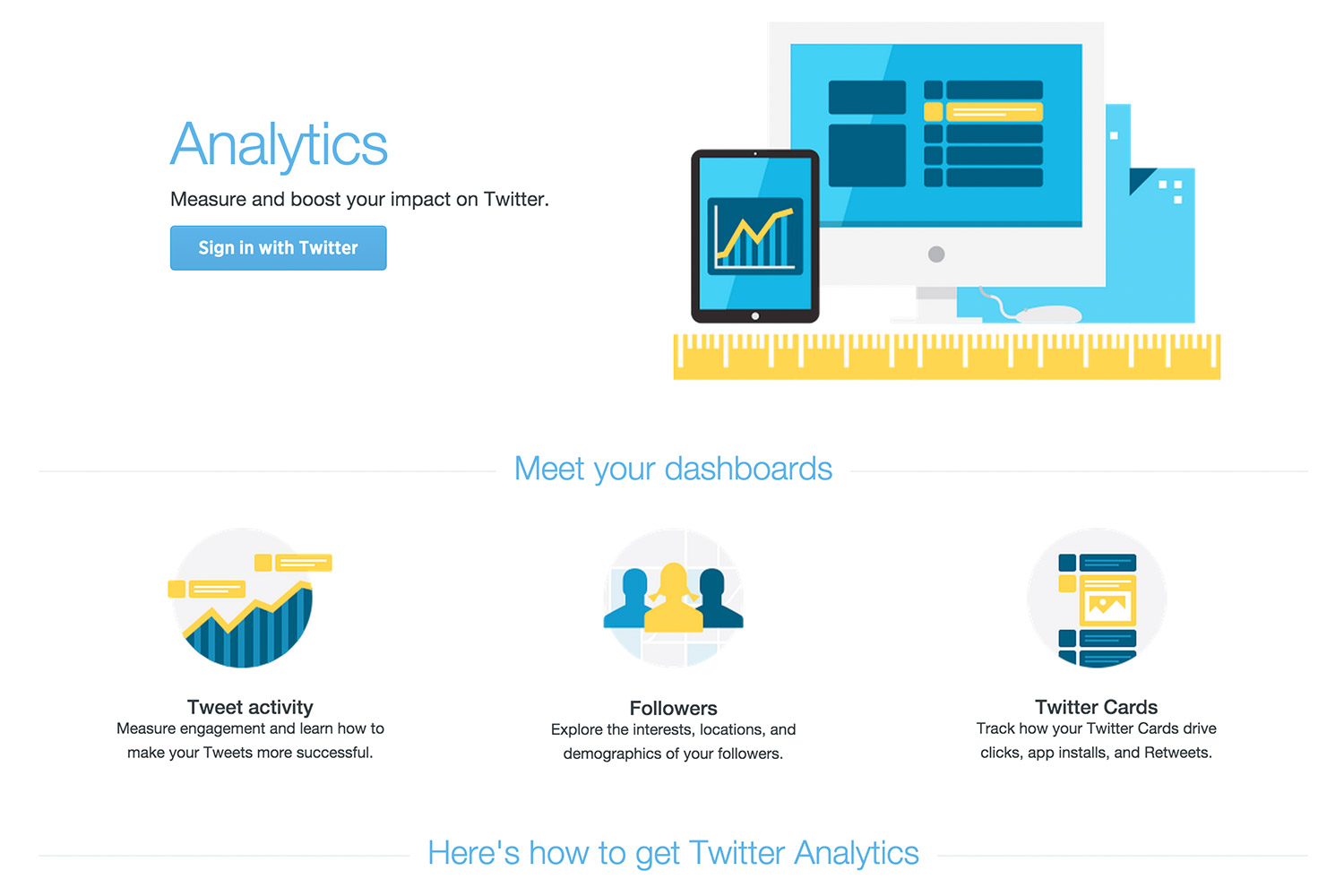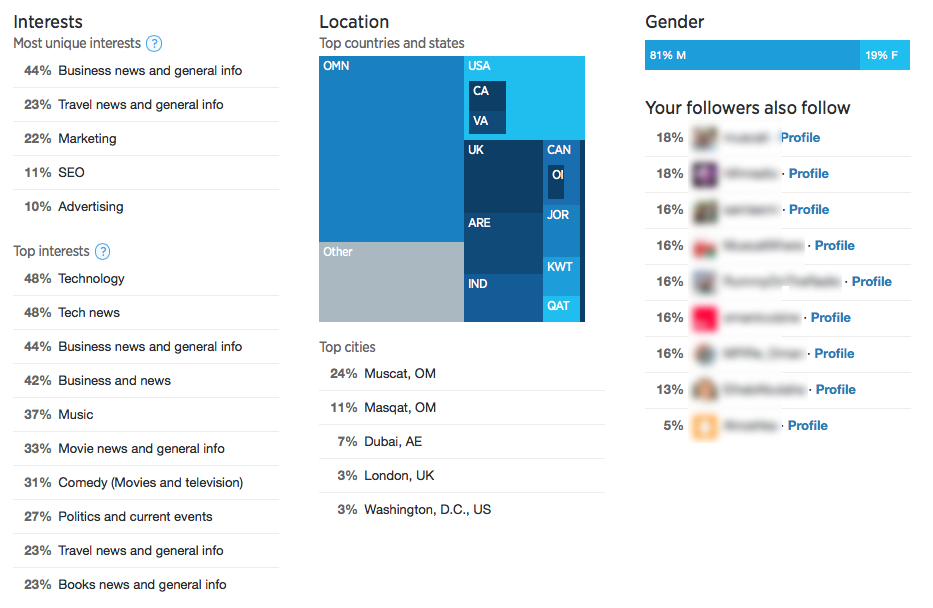Do you use Twitter Analytics?

How do I get access to Twitter Analytics?
- Start Using Twitter Cards, and
- Become an advertiser, which is the obvious one.
Some of the useful functions of Twitter Analytics
- How many times was my tweet shown? (Will help identify if you're pushing content at the wrong time)
- How many people actually interacted with my tweet?
- What's the engagement rate for a particular tweet?
- The Type of Engagement received by your tweets
- What interests your followers?
- Top countries, states and cities where they come from
- Their Gender
- Top 9 accounts your followers follow, ranked by percentage.
- Engagement Rate over the selected time period
- Link Clicks over the selected time period
- Retweets over the selected time period
- Favorites over the selected time period
- Replies over the selected time period
Tweet related information
Twitter gathers stats for every tweet that you sent out. You can drill down up to a day-level to analyse the performance of the tweets for that day.
At a snapshot level, Twitter will tell you the impressions, engagement and the rate of engagement.
- Impressions: Number of times users saw your tweet on Twitter
- Engagements: Total number of times a user has interacted with a Tweet. This includes all clicks anywhere on the Tweet (including hashtags, links, avatar, username, and Tweet expansion), retweets, replies, follows, and favorites.
- Engagement Rate: The number of engagements (clicks, retweets, replies, follows and favorites) divided by the total number of impressions.
If you need deeper analysis on the Tweet, you can click to view the Tweet details.
In addition to a 48-hour impressions chart, this modal will also give you information on other key metrics.
- Impressions: Number of times users saw the Tweet on Twitter
- Embedded media clicks: Clicks to view a photo or video in the Tweet
- Detail expands: Number of times users clicked on the Tweet to view more details
- Link clicks: Clicks on a URL or Card in the Tweet
- User profile clicks: Clicks on the name, @handle, or profile photo of the Tweet author
- Retweets: Number of times users retweeted the Tweet to their followers
- Hashtag clicks: Clicks on hashtag(s) in the Tweet
- Replies: Number of replies to the Tweet
- Favorites: Number of times users favorited the Tweet
Follower related information
Have you ever wondered who your followers are? Where do they come from? What do they like? Why they like your brand?
While users don't feed this information into their profiles, Twitter learns their preferences and accordingly establishes a user profile for each and every account. For example, when creating your twitter account, there was no place to select your gender. So how does Twitter figure out that you're a male or a female?
The Follower Analytics analyse the pattern of the user - what they post, what they read and create a profile identifying their location (country, state, city), Gender (male, female) and their top interests (broad classification) - Big Data at work!
